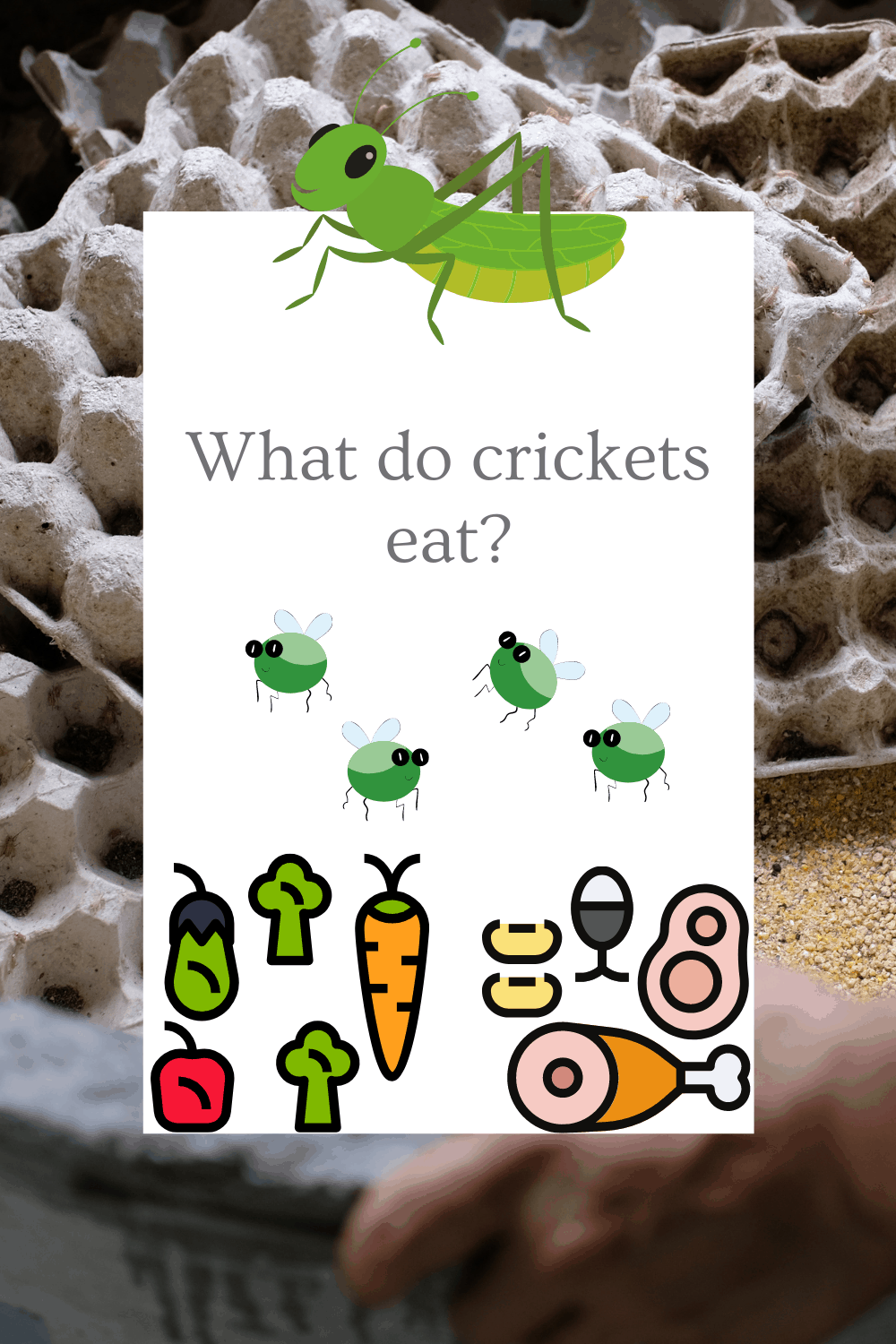
Jeffery Jago is a expert in horticulture and worm breeding. With a background in plant cultivation
Last Updated on May 11, 2021 by Jeffery Jago
Whether you are curious about what a wild cricket’s diet is, Or you’re looking to start learning how to farm your own crickets at home, everything you need to know will be in this article.
The wild cricket diet
You may be wondering what a wild cricket’s diet is. It can vary depending on where they live and the time of year, but generally insects are at the top of their list for food sources. Crickets that live in tropical climates will mostly eat fruit and plant matter such as leaves, bark, flowers or shrubs while crickets living further away from these areas might need to rely more heavily on other invertebrates like worms and slugs. They also find many types of animal droppings nourishing.
Fruits:
Wild crickets eat all sorts of fruits, including:
- Apples
- Bananas
- Blueberries
- Cherries
- Grapes, black and green ones to name a few. There are so many different types of fruit that crickets can eat!
Meat
All crickets need protein to survive, And wild crickets are no exception. The types of meat wild crickets eat are:
- Slugs
- Worms
- Insect larvae, such as caterpillars and grubs.
- Various flying insects and beetles
These are the most commonly eaten foods by wild crickets. They will also eat other insects if they can get them!
Many types of animal droppings are another type of protein that many crickets enjoy a lot. Again, there are so many different sources of meat in their diet!
Vegetables
There are so many different types of vegetables that crickets can eat! They can enjoy a variety of leaves in their diet. Wild crickets will also eat roots and tubers.
Some people have even found wild crickets eating the seeds from various plants. And this is just to name a few things they’ll eat out there on those fields and plains–the possibilities are endless when it comes to what these little bugs like to snack on!
But not all crickets are born equal, and each species has its own unique dietary needs. Some are even known to eat various types of wood, such as the camel cricket.
Domesticated cricket diet
Crickets raised by humans will typically be fed an assortment of proteins, grains, vitamins and minerals in order to produce healthy adults with all essential nutrients. This means that if you grow your own crickets for human consumption, you can feed them anything that’s plant-based.
There are a few reasons we want to be picky about what we feed domestic crickets. This is especially true if they are destined for human consumption.
What goes into the cricket will determine things such as:
- taste
- appearance
- the texture of the exoskeleton
- Whether or not they are anemic (lacking in iron)
- Size and weight.
- Health status.
- How efficiently a cricket can convert feed to weight growth, protein levels in its body, how much it lays eggs etc.
Needless to say, what goes into your crickets will have a significant impact on their future as a food source for humans (or animals!).
In the wild, Crickets get their water from the plants they eat, but in captivity and when destined for human consumption, it is better to give them water on their own.
The best way to give water to crickets is the sponge method. Drop a small sponge into their container and fill it with water.
The sponge will keep them moist long enough for the crickets to drink from, but not so wet that they breed bacteria or mold.
Be sure to change out old sponges every other day.
Another thing that people swear crickets love is cat food. Yes, the same stuff you feed your cat. I’m not sure how they would know that though as it’s never been tested on crickets in a lab setting before but there are plenty of reports from people who successfully raised them this way so if you’re interested in giving it a try then go for it!
Allowing them to eat fruit and vegetables along with it is a good idea though. While they can survive off just protein sources like dried mealworms or chicken eggs (especially when breeding) and cat food, most are healthier with access to other nutrients too.
Some examples: Tomatoes, carrots, spinach leaves, lettuce leafs etc., should be chopped up finely into small pieces so that their tiny mouths can get through.
There are various types of crickets whos diets you should account for. Some of the more common domestic species include:
Banded crickets (the most popular species of farmed cricket), Also known as Gryllodes sigillatus. The common house cricket, Acheta domestica, and the black field cricket, Gryllus Bimaculatus.
Branded crickets are the most popular type of farmed cricket, and are also the largest. They eat any type of food that can be chopped up into small pieces for them to consume with their tiny mouths – such as tomatoes, carrots, spinach leaves or lettuce leafs.
House crickets like a diet high in protein from dried mealworms and chicken eggs (especially when breeding). Males will need more than females due to the energy needed for producing sperm cells which may take up 30% of their body weight daily!
The Black Field Cricket needs an omnivorous diet similar to Banded Crickets but they prefer and require much fewer protein sources. This makes them a better choice for people with allergies to the protein sources listed above.
When It comes to animal consumption of crickets, it’s important to remember they need to be gut-loaded. What does gut loading mean? It’s when you feed them a meal high in protein or other nutrients before cooking or eating (raw). This helps give crickets the nutrients they need to be tasty during their short lifespan on earth!
Humans on the other hand don’t really want their crickets to be stuffed with their last meal. Fortunatly, Most human consumption of crickets (at least in north America) happens in powdered form. The cricket is ground up, dried and mixed with other powders. These are then put in capsules for easy consumption, or used to make a protein shake. They also can be used as a type of flour for protein-infused baked goods.
Crickets have been eaten by humans for centuries throughout the world as a high-protein source of food that’s affordable and easily available. For example: In Africa, crickets are often found on menus at wedding dinners because they’re seen as symbols of fertility; In parts of Thailand there is an entire industry devoted solely to raising crickets; And people from all over the world eat cricket flour – which has become increasingly popular among those who follow gluten-free diets.
In conclusion
The types of food crickets eat in captivity and for human consumption are very different from the diet they have as part of their natural environment. And while it is a common misconception that crickets can live on just anything, there’s an easy way to make them last: by giving them one high-protein source (which could be any animal protein) at every meal until they run out. Crickets need protein! They’re not eating all day; so don’t give them something like lettuce or fruit – which will only fill up space without providing enough nutrients.


